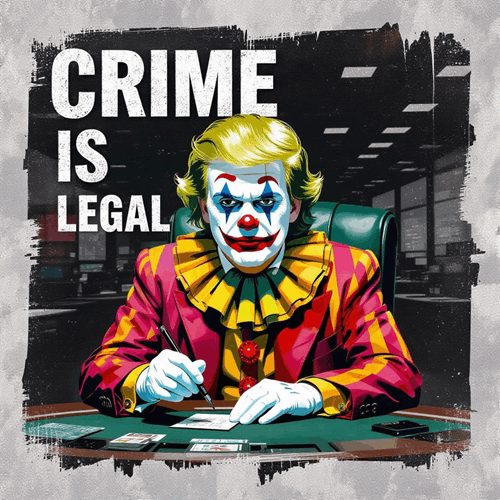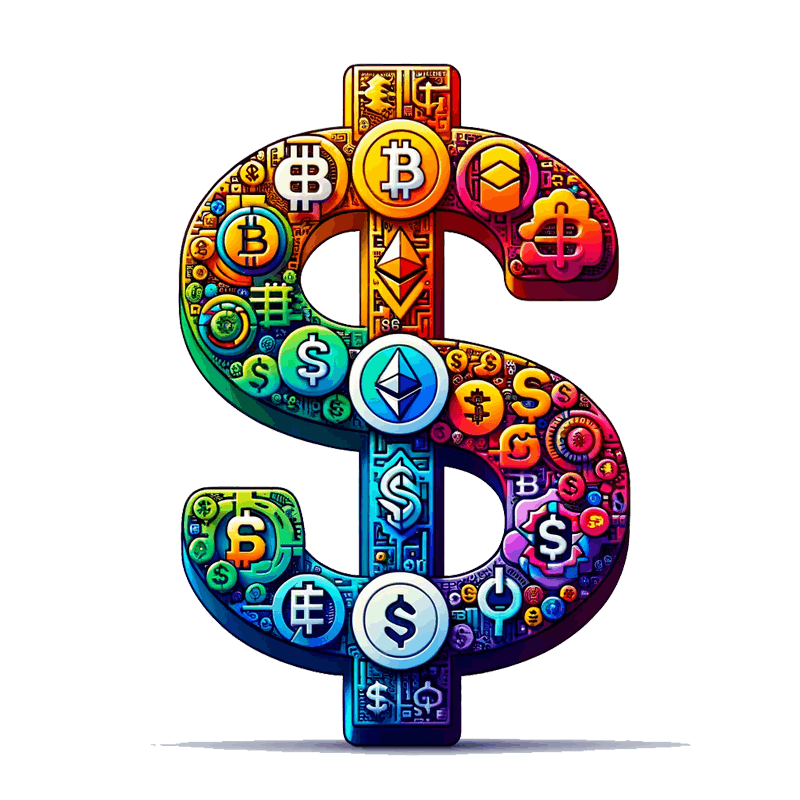The Trump Family’s Crypto Corruption: WLFI, Memes and International Scandal
Donald Trump and his family have long blurred the lines between business and politics, but their aggressive entry
into cryptocurrency has created a new level of corruption risk. From meme coins to governance tokens, stablecoins, and foreign-backed deals, the Trump family has leveraged political power and influence to enrich themselves through crypto schemes.
This blog explores the $TRUMP meme coin, the World Liberty Financial platform ($WLFI and USD1), ties to controversial figures like Justin Sun and Binance’s CZ, and deepening relationships with investors in the UAE.
$TRUMP: The Meme Coin That Sold Political Access
In early 2025, Trump launched the $TRUMP meme coin through a family-controlled entity. On paper, it was marketed as a patriotic digital asset and community token. In practice, it was a wealth-extraction mechanism: the Trump family retained 80% of all tokens and skimmed fees from transactions.
The coin’s launch was a frenzy. Valued at nearly $5 billion within hours and eventually peaking at a $27 billion diluted valuation, it attracted thousands of eager buyers. But as quickly as it soared, it collapsed, leaving ordinary investors holding losses while the Trump family and insiders cashed out.
Most concerning was how the token was used to sell political access. High-value token holders were offered a seat at an exclusive dinner with Trump at his golf club. Millions were spent by investors—many of them foreign nationals—just for a chance to dine with the former president. What looked like a silly meme coin turned into a pay-to-play mechanism that monetized access to political power.
One of the largest buyers was crypto mogul Justin Sun, who reportedly spent tens of millions on $TRUMP tokens. His investment earned him a golden ticket to the Trump family’s inner circle, despite being under investigation by U.S. regulators at the time.
🚨 The $TRUMP Meme Coin: Selling Access to Power
- Trump launched a meme coin in 2025.
- His family secretly kept 80% of the tokens.
- Investors were promised “perks” like dinner with Trump if they bought enough.
- Foreign buyers—including shady crypto mogul Justin Sun—spent millions for political access.
- The coin collapsed, losing 80% of its value. Ordinary people lost money. The Trump family got richer.
World Liberty Financial: A Parallel Trump Economy
The $TRUMP coin was only the beginning. By late 2024, Trump allies had set up World Liberty Financial (WLF), a crypto platform issuing its own governance token, $WLFI, and later a dollar-pegged stablecoin, USD1. A Trump family entity quietly owned 60% of WLF and received 75% of revenue from token sales—making it less a public financial innovation than a private family cash machine.
When $WLFI launched, the family’s paper wealth ballooned by billions. The token gave holders voting power over the platform’s governance but concentrated control in the hands of Trump insiders. USD1, the stablecoin, was pitched as an alternative to traditional banking and began circulating in massive volumes almost immediately, especially in foreign markets.
Foreign investment played a key role. Justin Sun funneled $75 million into WLFI. Firms based in Abu Dhabi poured billions into USD1. This wasn’t just another crypto startup—it was a global financial system tied directly to Trump’s personal fortune, and to his political leverage.
💸 World Liberty Financial ($WLFI and USD1): A Private Trump Bank
- Trump’s allies created a crypto platform with two tokens: WLFI (governance) and USD1 (stablecoin).
- A Trump family company owns 60% and pockets 75% of profits.
- Foreign sovereign funds in Abu Dhabi invested billions.
- Justin Sun put in $75 million.
- Trump’s paper wealth jumped by billions—while retail investors lost again.
The Extraction Events and Speculative Bubbles
The Trump family’s crypto launches became infamous not just for their scale, but for their ruthless design. Industry observers began calling them “extraction events”—short-lived, pump-and-dump spectacles engineered to transfer wealth from ordinary buyers to insiders.
When $TRUMP first debuted, the launch was carefully choreographed. Insiders and favored allies were given early allocations at rock-bottom prices, allowing them to lock in guaranteed profits the moment the token went public. Among the earliest and largest buyers were:
- Justin Sun, the Chinese-born crypto mogul, who reportedly spent more than $20 million in the opening hours and secured invitations to private Trump family events.
- Silicon Valley tech investors aligned with Trump’s political movement, who quietly scooped up discounted allocations.
- A handful of wealthy loyalists from Texas and Florida, some of whom were later photographed at Trump’s private memecoin dinner.
These insiders had an enormous advantage. While retail buyers scrambled to purchase at inflated launch prices, early whales unloaded portions of their holdings at 10x–50x gains. The
Trump family itself, sitting on 80% of the total supply through CIC Digital LLC, skimmed transaction fees and strategically sold into the frenzy. Within days, tens of millions had been siphoned out of the market by insiders, while latecomers saw their holdings collapse by more than 80%.
The same playbook unfolded with World Liberty Financial’s $WLFI governance token. At launch, a Trump family entity already owned 60% of the supply, effectively guaranteeing their control. Top investors included:
- Justin Sun again, who bought $75 million worth of WLFI tokens and became one of the largest non-family stakeholders.
- Abu Dhabi–backed funds, which made multi-billion-dollar purchases of USD1, the sister stablecoin, to cement early liquidity.
- Trump family insiders, who strategically dumped small amounts of WLFI during launch week, realizing hundreds of millions in profit before volatility set in.
Retail buyers, many of whom were Trump supporters persuaded by campaign rhetoric, were the ones left holding the bag. They entered the market at peak valuations, only to see WLFI prices collapse as insiders and foreign whales cashed out. Billions in paper value evaporated in weeks.
What made these extraction events uniquely troubling was the fusion of political theater and financial engineering. Trump’s rallies and Truth Social posts became pump signals. Even minor policy hints—such as promises of deregulation—caused speculative buying frenzies. To critics, it looked less like free markets and more like state-sponsored pump-and-dump schemes, where the ultimate beneficiaries were Trump family insiders and a handful of foreign backers.
In both $TRUMP and WLFI, the winners were clear: the Trump family, their closest allies, and select foreign investors. The losers were equally clear: small-time American buyers who believed the hype and entered too late.
These weren’t just volatile markets. They were rigged casinos—where the house always won, and the house had “TRUMP” stamped on the door.
Foreign Influence: Justin Sun, Binance’s CZ, and the UAE
The Trump crypto empire also created disturbing channels of foreign influence.
- Justin Sun: Despite being under international scrutiny for fraud and market manipulation, Sun became one of the largest investors in Trump’s crypto ecosystem. His contributions bought him not just tokens, but face time and political access.
- Binance and CZ: Meetings between WLF founders and Binance’s former CEO Changpeng Zhao took place in Abu Dhabi, where Binance itself was trying to rebuild credibility after admitting to money laundering violations. Tying Trump’s ventures to CZ’s network raised alarm bells about compliance and security.
- UAE Connections: Some of the largest capital infusions into USD1 came from Abu Dhabi sovereign funds and affiliated financial institutions. Billions in foreign money flooded into the Trump family’s crypto products, creating an unprecedented conflict of interest between foreign powers and U.S. political leadership.
Together, these relationships painted a picture of a crypto empire serving as both a personal enrichment vehicle and a foreign influence pipeline.
🌍 Foreign Influence on U.S. Politics
- Justin Sun: Under investigation, but bought his way into Trump’s orbit.
- Binance’s CZ: Convicted of money laundering, yet still a Trump partner.
- UAE Sovereign Funds: Pumped billions into Trump’s stablecoin, buying influence.
This isn’t just corruption. It’s foreign interference—purchased through crypto tokens.
Regulatory Capture and Political Corruption
The corruption risks weren’t just financial—they were legislative. As Trump’s crypto holdings grew, so did his political moves to deregulate the industry. His administration pushed for laws making it easier to issue stablecoins like USD1 with minimal oversight. The GENIUS Act, for example, reduced barriers for crypto firms, creating direct financial benefits for Trump’s ventures.
At the same time, watchdogs and members of Congress began raising alarms about the clear conflict of interest. Bills like the proposed End Crypto Corruption Act sought to prevent sitting or former presidents from launching digital assets. Critics labeled Trump’s ventures “pay-to-play politics on the blockchain.”
⚠️ Why It Matters
Trump’s crypto empire is:
- A pump-and-dump scheme that hurt small investors.
- A pay-to-play racket that sold political access.
- A foreign influence pipeline that put America’s future on the blockchain auction block.
The Bigger Picture: A Family Fortune Built on Crypto and Foreign Backing
Between meme coins, governance tokens, stablecoins, and mining operations tied to Trump-friendly states, the Trump family’s crypto empire expanded at breakneck speed. By mid-2025, analysts estimated that Trump-affiliated entities had gained billions in paper wealth. The numbers alone were staggering—but the mechanics behind them were even more alarming.
At the center of the scheme were opaque ownership structures. Trump family shell companies controlled the lion’s share of token supplies, funneled profits from transaction fees, and staked holdings in private wallets that were nearly impossible to trace. World Liberty Financial was structured in a way that concealed the Trump family’s direct control, while still guaranteeing them 60% ownership and 75% of all revenue. These entities operated like shadow banks, immune from traditional oversight.
But the story didn’t end with private enrichment. The flow of capital out of the U.S. and into foreign jurisdictions was a defining feature of the Trump crypto empire. The largest backers of the family’s ventures were not American retail investors—they were sovereign funds in the Middle East and controversial crypto moguls in Asia.
- UAE and Abu Dhabi Funds: Through bulk purchases of USD1, the Trump-backed stablecoin, billions of dollars in capital effectively shifted from U.S.-based wallets into Middle Eastern financial networks. This allowed Emirati sovereign wealth funds to accumulate leverage over a Trump family business while simultaneously enabling offshore movement of funds with minimal scrutiny.
- Chinese-Linked Exchanges and Investors: Figures like Justin Sun, whose businesses are intertwined with Chinese-backed crypto exchanges, invested tens of millions in $TRUMP and WLFI. Those purchases not only bought Sun face time with Trump but also opened a discreet channel for Chinese capital to cycle through Trump-linked platforms. With WLFI and USD1 trading across global exchanges, including those headquartered in Asia, vast amounts of money could be parked offshore or moved between entities with little transparency.
- Binance and Abu Dhabi Partnerships: By coordinating with Binance (then relocating key operations to the UAE after regulatory crackdowns), the Trump ecosystem plugged directly into one of the largest offshore crypto liquidity networks. This arrangement created a ready-made pipeline for capital flight and money laundering under the guise of “digital innovation.”
For the Trump family, this meant two things: direct profit and plausible deniability. Profits from token sales, fees, and insider allocations were pocketed via their private entities. At the same time, foreign investors were able to move money into Trump’s orbit, shielded by the murky accounting of blockchain wallets and offshore jurisdictions.
The consequences were devastating for ordinary Americans. Retail investors—many of them Trump supporters who believed the rhetoric about “taking back financial freedom”—poured life savings into the tokens, only to watch them evaporate when bubbles burst. Meanwhile, foreign players walked away with influence, Trump insiders with fortunes, and the U.S. financial system with new vulnerabilities.
What began as a meme coin joke had escalated into a sprawling system of corruption and influence trafficking, blending politics, global finance, and private enrichment. In effect, Trump had built a shadow economy: one where foreign billionaires, authoritarian states, and politically connected insiders thrived, while American investors and democratic safeguards were sacrificed for profit.
✊ What We Must Do
- Demand transparency from political leaders in crypto.
- Pass strict laws banning presidents and their families from launching tokens.
- Expose every shady investor who’s buying influence with coins.
Trump’s crypto grift isn’t just another scam. It’s a warning: if we don’t stop it, America’s democracy could be sold off—one token at a time.

Conclusion
The Trump family’s foray into crypto is more than a business venture—it is a case study in corruption. By intertwining political access, legislative power, and personal enrichment, they have created a system that undermines democratic accountability while inviting foreign interference into U.S. politics.
For ordinary investors, the Trump coins were financial traps. For foreign billionaires and sovereign funds, they were tickets to the Trump inner circle. And for the Trump family itself, they were the latest—and perhaps most dangerous—grift yet.
Unless new reforms are passed, crypto could become a permanent shadow economy for political families, blurring the line between governance and self-enrichment. The Trump crypto empire is not just a scandal—it is a warning.








































